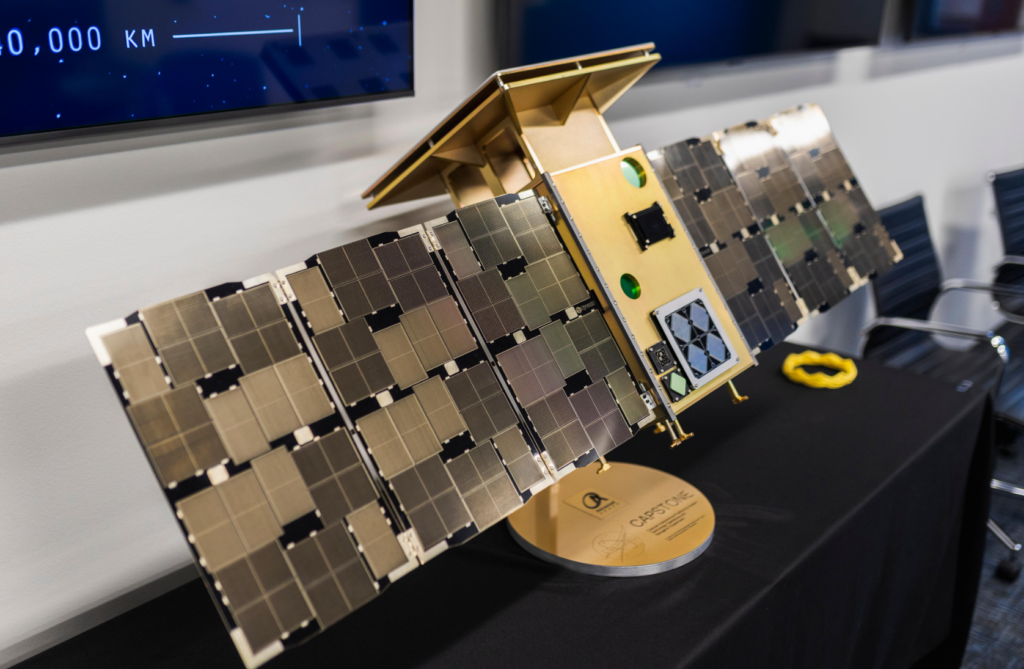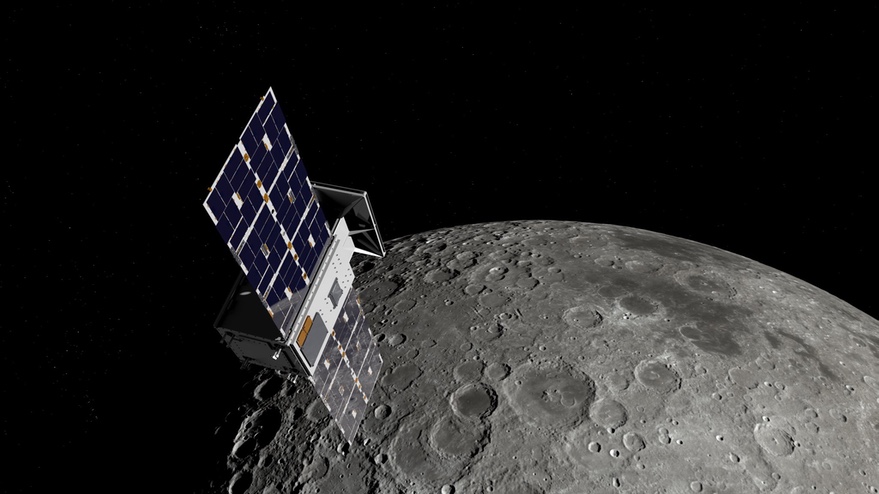
Rocket Lab’s Curie Engine & CAPSTONE Mission
As we have seen over the past few years and recent months especially, Rocket Lab has been very busy with different projects and plans. Only a few days from now the company is expected to attempt the first-ever booster catch during an actual mission. Not only this, but Rocket Lab is also preparing for an upcoming mission to the Moon that is not far away.
Specifically, CAPSTONE is a mission alongside NASA designed to support Artemis by reducing risk for future spacecraft. In addition, Rocket Lab has continued to test and innovate its HyperCurie engine expected to perform a series of orbit raising maneuvers before the final trans-lunar injection burn to set CAPSTONE on a course for lunar orbit. All of which Rocket Lab is working on to ensure a success for the future mission.
There is a lot that goes into different satellites or equipment sent into space. Of these different components, an engine is most certainly a vital piece. Not long ago, Rocket Lab closed a transaction to acquire Sinclair Interplanetary, a leading provider of high-quality, flight-proven satellite hardware. Here I will go more in-depth into the recent news regarding this mission and satellite hardware, and what to expect in the near future.
Recent Engine Progress

As the long awaited mission to the Moon gets closer and closer, Rocket Lab continues to make progress as needed. Just yesterday, the company tweeted saying, “The HyperCurie engine in action preparing for the CAPSTONE mission to lunar orbit for @AdvancedSpace and @NASA! This small but mighty engine will perform a series of orbit raising maneuvers before the final trans-lunar injection burn to set CAPSTONE on a course for lunar orbit.” The tweet included a 26 second video clip of a qualification hot fire. The HyperCurie engine is a more powerful variant of Rocket Lab’s Curie engine. This small engine is used on different components such as Electron’s kick stage and Photon. Curie is an in-house designed and developed in-space propulsion system. It uses a green monopropellant as its propellant and is used for the third stage of the Electron rocket as well as Photon. It produces 120 newtons of thrust, and has a specific impulse of approximately 320 seconds. In terms of the mission to the Moon, once Electron reaches low Earth orbit, our Lunar Photon upper stage takes the reigns to deliver the CAPSTONE spacecraft onto its highly efficient ballistic transfer orbit to the Moon. Lunar Photon, with Advanced Space’s CAPSTONE attached, will orbit the Earth in elliptical phasing orbits over nine days to build up velocity for a Trans Lunar Injection to deploy CAPSTONE into the deep space, low energy transfer orbit to the vicinity of the Moon. This will be the job of the HyperCurie engine.
CAPSTONE
/cdn.vox-cdn.com/uploads/chorus_asset/file/20038080/Photon_CAPSTONE_small.jpg)
Now that we know more about different vital components and their progress, we can take a closer look at the overall CAPSTONE mission and what Rocket Lab has been up to. Specifically, in May 2022, Rocket Lab will launch a CubeSat to the Moon. This historic pathfinding mission supports NASA’s Artemis program which will land the first woman and first person of color on the Moon. Using the Electron rocket and new Lunar Photon upper stage, Rocket Lab will inject the Cislunar Autonomous Positioning System Technology Operations and Navigation Experiment (CAPSTONE) CubeSat to a highly efficient transfer orbit to the Moon. CAPSTONE is owned and operated by Advanced Space in Westminster, Colorado, for NASA. CAPSTONE’s primary objective is to test and verify the calculated orbital stability of a Near Rectilinear Halo Orbit around the Moon, the same orbit planned for Gateway. NASA’s Gateway is a small space station that will orbit around the Moon to provide astronauts with access to the lunar surface. It will feature living quarters for astronauts, a lab for science and research, and ports for visiting spacecraft. CAPSTONE will also test a navigation system developed by Advanced Space that will measure its absolute position in cislunar space using interaction with NASA’s Lunar Reconnaissance Orbiter without relying on ground stations for navigation support. CAPSTONE is one of the first steps to learn how to operate more robust missions in this unique orbit, thus laying the groundwork for future exploration of our solar system.
Just yesterday, Rocket Lab provided another tweet mentioning the mission to the Moon saying, “Learn more about CAPSTONE, the mission designed to support Artemis by reducing risk for future spacecraft by validating innovative navigation technologies and verifying the dynamics of a near rectilinear halo orbit.” It’s clear that the company is getting very close to launch and wants to remind everyone what’s to come. CAPSTONE will be the first satellite to operate in a Near Rectilinear Halo Orbit around the Moon. CAPSTONE aims to reduce risk and validate operational concepts for future missions using the same lunar orbit. In this orbit, CAPSTONE will orbit together with the Moon as it orbits Earth and will pass as close as 1,600km and as far as 70,000km from the lunar surface. About the size of a microwave oven, this 25 kilogram satellite has an onboard communications system capable of determining how far CAPSTONE is from NASA’s Lunar Reconnaissance Orbiter and how fast the distance between the two spacecraft is changing. This inter-spacecraft information will be used to demonstrate the software for autonomous navigation, CAPS, that, when fully demonstrated, will enable future missions to determine their location without having to rely exclusively on tracking from Earth.
The orbit, formally known as a near rectilinear halo orbit (NRHO), is significantly elongated. Its location at a precise balance point in the gravities of Earth and the Moon, offers stability for long-term missions like Gateway and requires minimal energy to maintain. CAPSTONE’s orbit also establishes a location that is an ideal staging area for missions to the Moon and beyond. The orbit will bring CAPSTONE within 1,000 miles of one lunar pole on its near pass and 43,500 miles from the other pole at its peak every seven days, requiring less propulsion capability for spacecraft flying to and from the Moon’s surface than other circular orbits. After a three-month journey to its target destination, CAPSTONE will orbit this area around the Moon for at least six months to understand the characteristics of the orbit. Specifically, it will validate the power and propulsion requirements for maintaining its orbit as predicted by NASA’s models, reducing logistical uncertainties. It will also demonstrate the reliability of innovative spacecraft-to-spacecraft navigation solutions as well as communication capabilities with Earth. The NRHO provides the advantage of an unobstructed view of Earth in addition to coverage of the lunar South Pole. To test these new navigation capabilities, CAPSTONE has a second dedicated payload flight computer and radio that will perform calculations to determine where the CubeSat is in its orbital path. Circling the Moon since 2009, NASA’s Lunar Reconnaissance Orbiter (LRO) will serve as a reference point for CAPSTONE. The intention is for CAPSTONE to communicate directly with LRO and utilize the data obtained from this crosslink to measure how far it is from LRO and how fast the distance between the two changes, which in turn determines CAPSTONE’s position in space.
This peer-to-peer information will be used to evaluate CAPSTONE’s autonomous navigation software. If successful, this software, referred to as the Cislunar Autonomous Positioning System (CAPS), will allow future spacecraft to determine their location without having to rely exclusively on tracking from Earth. This capability could enable future technology demonstrations to perform on their own without support from the ground and allow ground-based antennas to prioritize valuable science data over more routine operational tracking. CAPSTONE is scheduled to launch in May 2022 aboard a Rocket Lab’s Electron rocket from the company’s Launch Complex 1 in New Zealand. With a highly ambitious schedule, CAPSTONE will demonstrate key commercial capabilities. NASA partners will test cutting-edge tools for mission planning and operations, paving the way and expanding opportunities for small and more affordable space and exploration missions to the Moon, Mars, and other destinations throughout the solar system. In addition to what was mentioned, the mission has many different objectives and partners all working together to make it a success. While small in comparison to future plans regarding the Moon, CAPSTONE will provide a lot of invaluable information that will have a direct impact on future Moon operations and more.
Conclusion
Rocket Lab has been staying very busy over the past few years and especially in recent months. Just yesterday the company provided more updates on the HyperCurie engine and the CAPSTONE mission. This included additional information and qualification hot fire for the engine. All of which shows promising signs for the mission expected to happen within the next few months. We will have to wait and see how it progresses and the impact it has on the space industry.
